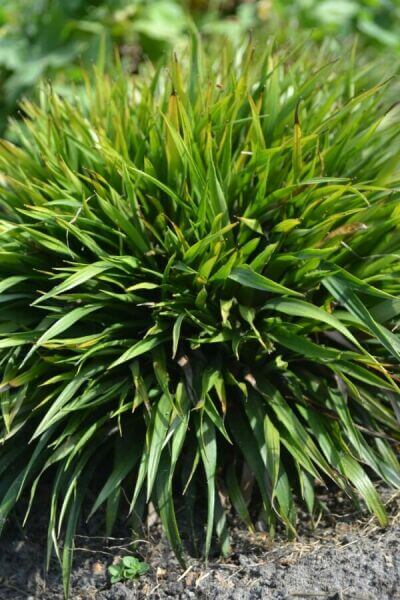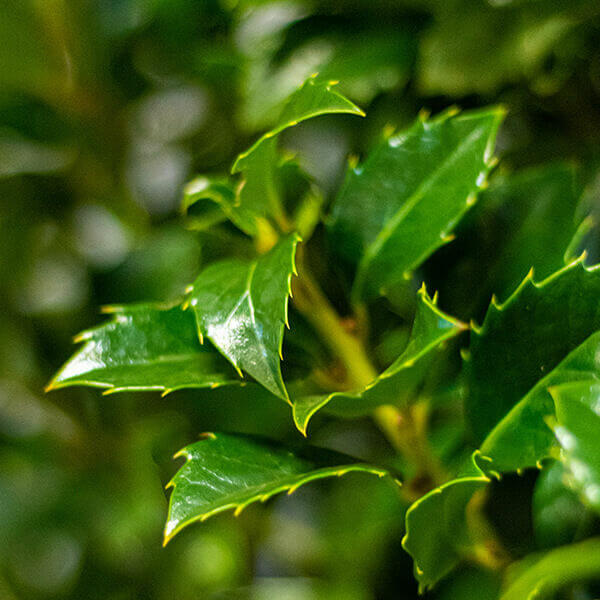Hedge Plants For Winter Berries
Boost your garden's attraction with lavish hedge ranges such as Yew (Taxus), Thuja, Laurel, Photinia, and Bamboo, celebrated for their structural integrity and environmental advantages.
Yew and Thuja offer evergreen coverage and winter durability, while Laurel uses rapid development and broad, aromatic leaves.
Photinia includes seasonal appeal with its dynamic red foliage, and Bamboo provides a low-maintenance, tranquil atmosphere.
These hedges improve air quality, reduce sound, and produce tranquil, private areas.
Correct planting, spacing, and upkeep guarantee vigorous development and ecological harmony.
Check out how these rich ranges can raise your garden's beauty and well-being.
Key Takeaways
Change Your Garden With Lush Hedge Varieties
- Select Yew for its thick, evergreen growth and unparalleled longevity.
- Go with Laurel for its quick growth and broad leaves, making sure quick privacy.
- Pick Photinia for its vibrant seasonal foliage, which turns a striking dark red.
- Make use of Bamboo for a low-maintenance, winter-hardy hedge with visual appeal.
- Space plants 2-3 per meter and prune routinely for optimal growth and health.
Popular Hedge Plants
When transforming a garden with rich hedge varieties, it's necessary to think about popular hedge plants such as Yew, Thuja, Laurel, and Photinia due to their distinct attributes and advantages.
Yew (Taxus) is highly respected for its longevity and dense, green development, making it a prime option for sustaining landscapes.
Thuja is kept in mind for its evergreen foliage and robust winter season durability.
Photinia adds seasonal vibrancy with red leaves that darken gradually, producing vibrant visual appeal.
Laurel provides fast growth and fragrant, broad leaves, ideal for quick personal privacy.
In Addition, Bamboo is an outstanding option for ambiance, offering a low-maintenance, winter-hardy option that boosts the garden's visual with its sophisticated, swaying walking sticks.
These selections cater to a range of horticultural needs and preferences.
Benefits of Garden Hedges
Garden hedges provide a wide variety of advantages, making them an important addition to any landscape. These natural barriers are affordable to implement and offer considerable wind protection, boosting air blood circulation and contributing to sound reduction. The thick foliage of hedges like Thuja and Beech makes sure personal privacy by obstructing visibility, creating a remote and serene environment.
Hedges likewise play an important role in microclimate guideline, supplying a steady environment that fosters plant growth and decreases temperature variations. Their complex leaf structures filter pollutants, enhancing air quality and contributing to a much healthier garden ecosystem.
Additionally, hedges excel in sound reduction, taking in and deflecting sound waves to lower ambient noise levels. This double functionality of supplying both visual and acoustic personal privacy enhances the general harmony and aesthetic appeal of any garden.
Planting and Maintenance Tips
For an effective hedge, meticulous preparation of the planting area is vital. Make sure the soil has correct pH and drainage to support strong root advancement.
Area the plants appropriately for the selected types. Water the hedge often throughout its initial growth stage, changing as needed with seasonal changes.
Execute a organized bug control and disease prevention strategy, using chemical or natural treatments when necessary. Regularly examine for aphids, termites, and fungal infections.
Apply mulch to maintain wetness and reduce weeds. Seasonal pruning promotes thick growth and air flow, important for plant health.
Following these standards will assist you cultivate a lively, well-maintained hedge that boosts the charm of your garden.
Spacing and Cutting Standards
Spacing and Cutting Standards
Proper spacing and trimming are essential for cultivating healthy, aesthetically appealing hedges. Sufficient spacing guarantees each plant gets sufficient nutrients, light, and airflow.
Follow these standards for ideal hedge upkeep:
- Spacing: Position hedge plants 2-3 plants per meter to motivate robust development.
- Pruning Methods: Routine pruning is essential for keeping wanted hedge height and shape. Trim new development in summer and cut down older wood throughout winter season.
- Seasonal Care: Change cutting schedules and approaches according to seasonal requirements to make sure plant health.
- Hedge Height: Routinely screen and cut to keep the preferred hedge height and accomplish uniform visual appeals.
Abiding by these actions will ensure your hedge flourishes, enhancing both the appeal and performance of your garden.
Picking the Right Hedge
Selecting the Right Hedge
Picking the suitable hedge involves examining elements such as mature height, foliage density, and ecological durability. Successful hedge plant choice requires understanding each species' development attributes and site-specific flexibility.
For instance, Yew (Taxus) provides outstanding durability and dense development, while Thuja is noteworthy for its winter season durability. Furthermore, considering upkeep requirements is important; fast-growing species like Laurel or Privet need regular cutting, whereas low-maintenance choices like Bamboo or Ivy may be more suitable for those seeking very little maintenance.
Ecological elements such as soil type, light availability, and moisture conditions need to also assist the selection procedure. This cautious technique guarantees the picked hedges will flourish, supplying both practical and aesthetic advantages to the garden landscape.
Shipment and Planting Guidance
To guarantee your hedge plants thrive, they should be delivered by specialized carriers and planted quickly upon arrival.
Follow these necessary steps for successful planting:
- Soil Preparation: Improve the soil with raw material to improve drain and nutrient material.
- Planting Depth: Create a trench twice the width and equal to the depth of the root ball.
- Watering Strategies: Water completely after planting, keeping the soil consistently moist but not filled.
- Mulching: Apply a layer of mulch to retain moisture and reduce weeds.
Consumer Support and Service
Provided the important function of prompt help in horticultural pursuits, our customer support team is available six days a week through telephone, email, and social media to provide professional suggestions and promptly resolve any issues. Their devotion to fast action times makes sure consumer satisfaction by solving queries associated with plant health, ideal planting techniques, and maintenance schedules.

Reaction Time
-----------------
Within 48 hours
This thorough support group, strengthened by an outstanding 9.3/ 10 client ranking, highlights our dedication to boosting the gardening experience for every client.
Frequently Asked Questions
How Long Does It Take for Hedge Plants to Establish?
Hedge plants typically need one to three years to become fully established, with the exact duration differing by types and growing conditions.
Reliable care throughout this important duration is vital for robust development. Consistent watering, watchful weed control, and appropriate fertilizer application are pivotal in promoting strong root development.
For example, fast-growing types like Laurel might develop faster, while slower-growing ranges such as Yew may take longer. Diligent upkeep speeds up the facility process, resulting in dense and healthy hedges.
What Are the Finest Hedge Plants for Personal Privacy?
The question of the best hedge plants for personal privacy includes assessing evergreen and deciduous options.
Evergreen hedges like Thuja, Laurel, and Cypress provide year-round protection, guaranteeing continuous privacy.
On the other hand, deciduous hedges such as Beech provide seasonal privacy, shedding leaves in cooler months.
Secret maintenance pointers for personal privacy hedges include routine cutting, fertilizing in spring, and proper spacing-- normally 2 to 3 plants per meter.
Furthermore, constant watering and persistent weed removal are vital for promoting healthy, dense growth.
Can Hedge Plants Draw In Wildlife to My Garden?
Yes, hedge plants can attract wildlife to your garden by supplying vital benefits like shelter, food, and nesting websites, thus boosting local biodiversity. Yew, holly, and laurel are excellent for bring in birds, while ivy supports a variety of pests.
However, it is necessary to keep in mind that there are some disadvantages, such as increased upkeep to manage bugs and regular upkeep. Thoroughly selecting and preserving hedge varieties can help stabilize these downsides and benefits, ultimately cultivating a vibrant and sustainable environment in your garden.
Are There Any Blooming Hedge Plants Available?
Yes, there are flowering hedge plants readily available that can enhance the charm of your garden.
For instance, Elaeagnus, likewise called Olive Willow, produces aromatic white flowers in the fall, including a touch of elegance.
Photinia, another popular choice, showcases dynamic red leaves that develop into an abundant green, creating a dynamic visual impact throughout the seasons.
To guarantee these plants grow, it's necessary to practice appropriate pruning methods and seasonal upkeep, such as cutting brand-new growth in the summer and cutting back in the winter.
These measures will assist maintain the health and aesthetic appeal of your flowering hedges.
How Do I Prevent Insects in My Hedge Plants?
To prevent insects in hedge plants, utilize natural insect control methods and preserve appropriate hedge care. Introduce useful bugs like ladybugs, which take advantage of damaging insects, to produce a well balanced community.
Routinely examine your hedges for signs hedge plants of infestation and quickly eliminate any afflicted parts to prevent the spread. Ensure the health of your hedges by applying balanced fertilizers and supplying sufficient water.
Use mulching to retain soil moisture and proper spacing to lower plant tension and promote robust development. These practices collectively help in minimizing bug concerns and preserving a healthy hedge.
Conclusion
In essence, selecting the right hedge ranges such as Yew, Thuja, and Laurel can transform any garden into a peaceful haven. These plants supply year-round plant, improve aesthetic appeal, and deal useful benefits like sound decrease and wind security.
Proper planting strategies, accurate spacing, consistent watering, and seasonal cutting are important for optimal development.
Trustworthy delivery services and expert consumer support make sure a seamless experience from purchase to planting, making it simpler than ever to raise your outdoor area.
Garden hedges offer a plethora of advantages, making them a valuable addition to any landscape. These natural barriers are cost-efficient to execute and provide substantial wind security, boosting air flow and contributing to sound reduction. The thick foliage of hedges like Thuja and Beech ensures personal privacy by obstructing exposure, developing a secluded and peaceful environment.

Pruning Techniques: Regular pruning is essential for keeping preferred hedge height and shape. Trim brand-new growth in summer and cut back older wood throughout winter.